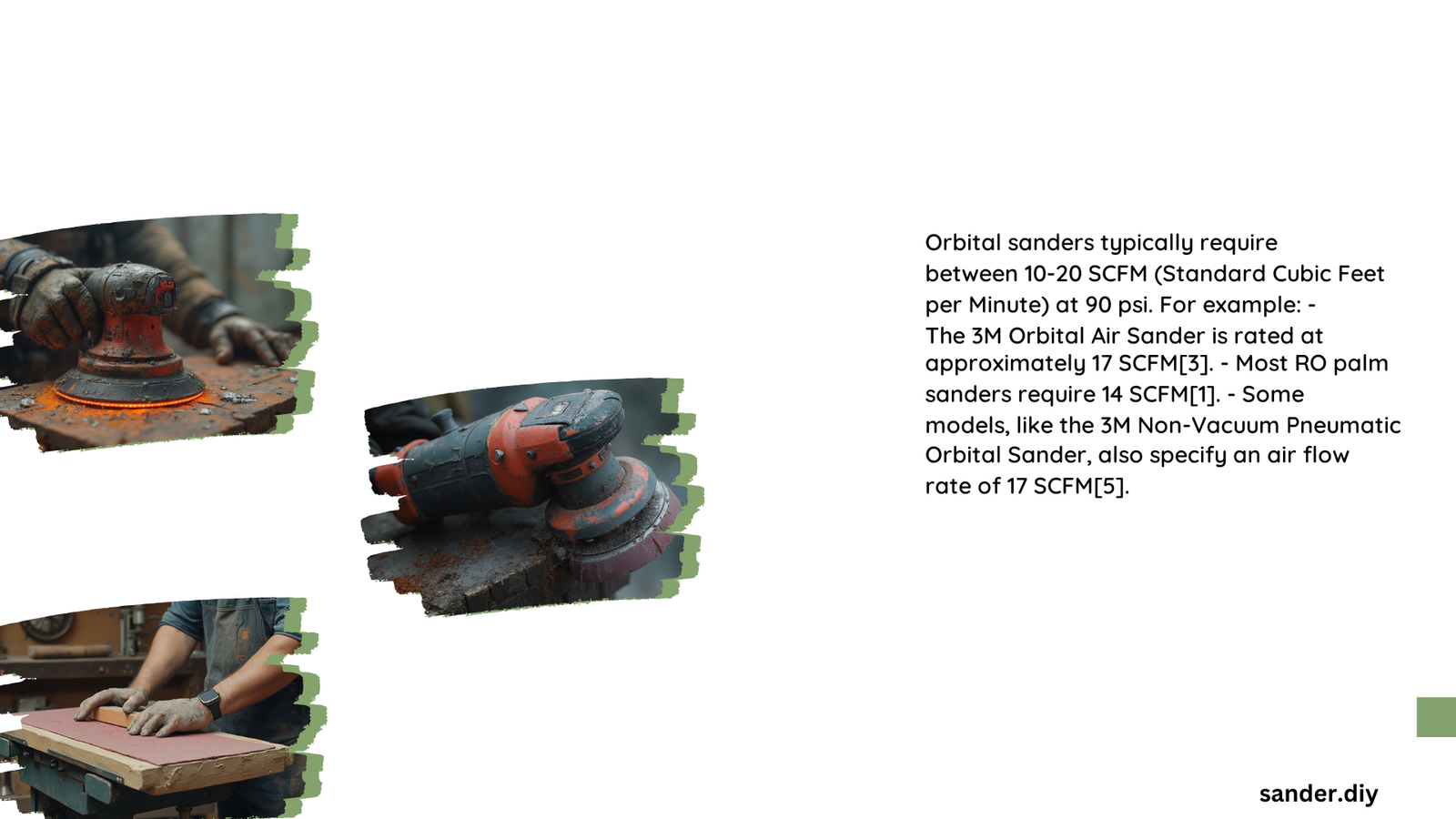Orbital sanders demand specific air flow measurements to operate efficiently, with most professional models requiring between 10-20 Standard Cubic Feet per Minute (SCFM) at 90 PSI. Understanding these precise air flow requirements is crucial for woodworkers, automotive professionals, and industrial technicians seeking optimal tool performance and longevity. The right SCFM ensures consistent sanding speed, prevents motor strain, and maintains peak operational efficiency across various sanding applications.
What Determines SCFM for Orbital Sanders?
How Much Air Flow Do Different Sanders Require?
Different orbital sanders have varying SCFM requirements based on their design and intended use:
| Sander Type | SCFM Range | Typical Application |
|---|---|---|
| Light-Duty Sanders | 8-12 SCFM | Home DIY Projects |
| Professional Sanders | 14-20 SCFM | Industrial Woodworking |
| Heavy-Duty Sanders | 20-25 SCFM | Automotive Refinishing |
Why Do SCFM Ratings Matter?
Insufficient air flow can cause multiple performance issues:
- Reduced Sanding Efficiency: Slower material removal
- Increased Tool Wear: Premature mechanical stress
- Inconsistent Performance: Fluctuating sanding speeds
- Potential Motor Damage: Long-term operational risks
Specific SCFM Ratings for Popular Sander Brands

What SCFM Does 3M Random Orbital Sander Need?
The 3M Random Orbital Sander specifically requires 17 SCFM at 90 PSI. This high air flow rating demands a robust air compressor capable of maintaining consistent pressure during extended use.
How Do Dynabrade Sanders Compare?
Dynabrade random orbital sanders typically need 14 SCFM at 90 PSIG (6.2 Bars). Their specifications highlight the importance of matching compressor capabilities with tool requirements.
Selecting the Right Air Compressor
What Factors Influence Compressor Selection?
Key considerations include:
- Total SCFM requirement
- Pressure maintenance capabilities
- Duty cycle
- Portability needs
- Budget constraints
How to Calculate Proper Air Compressor Size?
- Basic Calculation: Total SCFM of all tools + 30% overhead
- Professional Recommendation: Choose a compressor with 25-50% more capacity than your primary tool’s requirements
Advanced SCFM Considerations
What Impact Does Pressure Have?
Air pressure directly influences SCFM performance:
– Lower pressure reduces effective SCFM
– Higher pressure increases tool efficiency
– Consistent pressure maintains optimal sander performance
Practical Recommendations
- Always verify manufacturer’s specific SCFM requirements
- Invest in a compressor with higher capacity than minimum needs
- Regularly maintain air compressor for consistent performance
- Consider future tool acquisitions when selecting compressor
Technical Insights
Professional-grade orbital sanders typically operate most effectively between 14-20 SCFM, with variations depending on specific model and manufacturer design.
Pro Tip
Recommendation: Always consult manufacturer specifications and consider future tool expansion when selecting an air compressor for orbital sanders.
Final Technical Overview
Understanding SCFM requirements ensures:
– Optimal tool performance
– Extended equipment lifespan
– Consistent sanding results
– Efficient workflow management
Reference:
– Air Compressor Technical Specifications
– Orbital Sander SCFM Guidelines
– Professional Woodworking Tools Handbook
